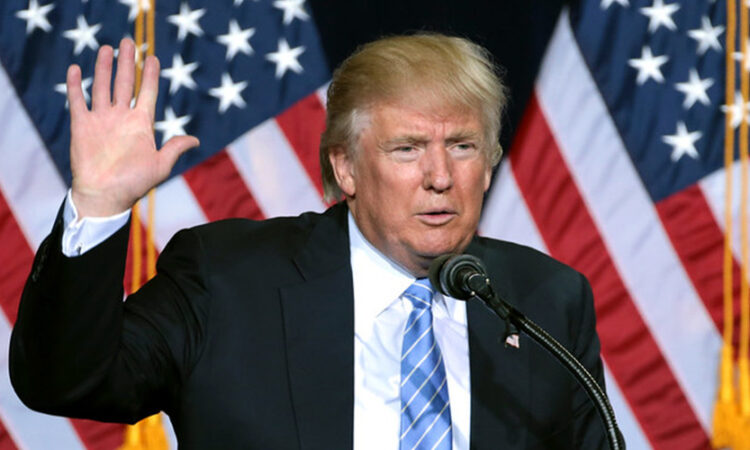
The Republican convention platform to ‘Make America Great Again’ with ‘a return to common sense’ is out, with a staccato list of 20 promises, frequently devoid of the supporting policy details to ascertain whether delivering on the promises is realistic. Among them, number 13 stands out: ‘Keep the US dollar as the world’s reserve currency.’
Dollar incumbency has sound foundations. The alternatives don’t look especially appetising. But even if dollar dominance diminishes at an accelerated rate, it would take more than four years to become a gallop. Point number 13 will be met for the next four years, no matter who is in office.
Looking at other aspects of the platform and at Donald Trump’s conduct during his term in office, however, a Trump 2.0 presidency may fray the foundations for dollar dominance.
Why? Dollar dominance reflects the US global leadership role; the massive size of the US economy with around 25% of global gross domestic product; the enormous depth, openness and liquidity of US capital markets and their ability to channel capital movements with little transaction cost or market impact. Not only that, but a relatively decent record of past macroeconomic management has played a significant part, as well as an innovative economy, strong financial institutions and good rule of law. Many of these pillars, such as the US’ colossal economic size, innovation and superior financial system, are strongly rooted and durable.
But on geopolitics, the global order built by the US through alliances and multilateralism continues to fragment amid greater dispersion in global economic weight, the rise of China, US/China tensions, Russia’s barbaric war on Ukraine and a more prosperous global South seeking to avoid being caught between the US and China.
‘Trump-proofing’ Europe and Nato
Trump’s past threats to leave Nato, the abandonment of the Iran nuclear deal, Paris Climate Accord and Trans-Pacific Partnership and questions about whether he would back Ukraine given his perceived closeness to Russian President Vladimir Putin, are reportedly leading to widespread discussion among key allies about how to Trump-proof Europe and Nato. Some three-quarters of foreign government holdings of US safe assets are held by countries with some form of military tie to the US. Despite the platform’s assertion that alliances will be strengthened, will the US remain a trusted partner? Can its strong ties persist?
The growing use of financial sanctions is related. If the US imposes financial sanctions multilaterally, with our allies – for example, blocking Russian central bank and oligarch assets – any fallout should be contained. But if the US unilaterally deploys sanctions with much greater frequency – let alone extraterritorially – that could accelerate any decline in the dollar’s global status. The Trump presidency was more unilateral in applying financial sanctions than President Joe Biden’s team.
US economic management soundness brought into question
The fiscal trajectory is dreadful. While the US can finance excessive massive deficits of over 6% of GDP per annum for the next decade, continued mammoth deficits will cause US debt levels to soar in coming decades – especially as America ages, entitlement costs soar and interest costs surge. Against that awful baseline, the Republican platform calls for ‘large tax cuts for workers and no tax on tips!’ and no cuts to Social Security and Medicare. The platform doesn’t mention debt and deficits. Republicans have already called for extending expiring tax provisions from 2017, which could add well over $4tn to US debt over the next decade. (US annual GDP is now $28tn.) Under Republican plans – based on what the platform says and doesn’t – US fiscal management becomes even more the antithesis of sound.
The platform mentions restoring price stability, but otherwise doesn’t discuss the Federal Reserve or monetary policy. Yet, Trump’s presidency openly criticised the Fed, pressuring for lower interest rates and calling Fed independence into question, notwithstanding copious evidence that independent central banks are able to secure better outcomes. In any case, a return to the Fed’s 2% inflation objective is already now well in sight.
On trade, Trump’s call for 10% across-the-board tariffs and 60% higher tariffs on China goes unmentioned. According to the Peterson Institute, these would cost a typical middle-income household about $1,700 each year. Economists of all stripes believe the tariffs would be inflationary. The Biden administration has maintained much of the Trump presidency tariffs and been protectionist in its own right.
Immigration has been a large contributor to US growth. The Congressional Budget Office estimated US GDP would be 2 percentage points higher in 2034 because of it. The Republican platform calls for mass deportation, however.
Putting the Republican platform and Trump’s policy orientation together, what does it mean for the dollar’s future reserve role? While dollar dominance remains entrenched, both the platform and Trump policies would mean less confidence and trust in American leadership, weakened macroeconomic management and enormous burdens on markets to finance a large supply of Treasuries. That would also mean a boost to the term premium, higher inflation and less growth. In short, this does not augur well for buttressing sustained dollar dominance.
Mark Sobel is US Chair of OMFIF.
Image credit: Gage Skidmore




